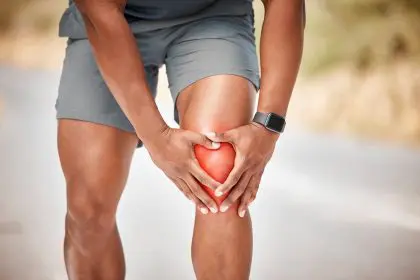Hip health is often overlooked until movement becomes a daily challenge. For many individuals, a noticeable limp can signal underlying issues that might require intervention, such as a hip replacement. While limping may seem like a minor inconvenience at first, it can be a red flag for significant joint problems.
Understanding the connection between limping and hip health proves vital for taking the right steps toward recovery and maintaining long-term mobility.
The crucial hip joint
The hip joint stands as one of the most critical structures in the body, enabling us to stand, walk, and perform daily activities with ease. This ball-and-socket joint allows a wide range of motion while bearing the body’s weight. Over time, stress on the joint can lead to wear and tear, injury, or degenerative conditions like arthritis.
When the hip joint fails to function correctly, limping often develops as a compensatory mechanism. This dysfunction typically results from pain, stiffness, or instability in the joint. Early recognition of these signs allows individuals to seek appropriate medical care before complications worsen.
Common causes of hip-related limping
Arthritis frequently leads the list of hip problems causing limps. Both osteoarthritis and rheumatoid arthritis damage the joint’s cartilage, resulting in painful bone-on-bone contact. This deterioration often creates a characteristic limping pattern as people try to minimize weight-bearing on the affected side.
Trauma from falls or accidents can also damage the hip joint or surrounding muscles. Even after initial healing, improper rehabilitation might lead to persistent limping. Additionally, conditions like bursitis or tendinitis create inflammation in the hip’s soft tissues, causing significant discomfort and altered walking patterns.
Hidden dangers of prolonged limping
Ignoring a limp can trigger cascading effects throughout the body. The compensation patterns developed to avoid pain often place excessive stress on other joints and muscles. Knee and lower back pain commonly develop as secondary issues, while muscle weakness in the affected leg can further complicate mobility.
Over time, these adaptations may lead to:
- Accelerated joint wear
- Chronic muscle strain
- Reduced cardiovascular fitness
- Increased fall risk
- Diminished quality of life
Recognizing replacement signals
Certain signs strongly suggest the need for hip replacement consideration:
Chronic pain that persists despite conservative treatment often indicates advanced joint damage. When medication and physical therapy fail to provide relief, surgical intervention may offer the best solution. Limited range of motion, particularly difficulty with basic movements like putting on shoes or getting in and out of cars, suggests significant joint deterioration.
Walking difficulties that disrupt daily activities deserve serious attention. If pain or stiffness prevents participation in regular activities or requires constant medication for management, consultation with an orthopedic specialist becomes crucial.
Modern replacement solutions
Today’s hip replacement procedures offer remarkable solutions for chronic hip problems. Advanced surgical techniques provide:
- More precise implant placement
- Smaller incisions
- Faster recovery times
- Improved long-term outcomes
- Greater mobility restoration
Recovery expectations
The journey after hip replacement requires dedication but offers substantial rewards. Most patients experience significant pain relief and mobility improvement within months of surgery. Physical therapy plays a crucial role in recovery, helping rebuild strength and restore normal walking patterns.
Success depends heavily on:
- Following post-operative guidelines
- Committing to rehabilitation exercises
- Maintaining proper nutrition
- Gradually increasing activity levels
- Regular follow-up care
Prevention strategies
While some hip problems stem from unavoidable factors like age or genetics, several preventive measures can reduce risk:
Maintaining healthy weight significantly reduces joint stress. Regular exercise, particularly low-impact activities like swimming or cycling, helps preserve joint health while building supporting muscles. Proper posture and body mechanics during daily activities protect the hip joint from unnecessary strain.
Future considerations
Addressing hip problems early offers the best outcomes. Whether through conservative treatment or surgical intervention, maintaining hip health significantly impacts overall quality of life. Regular medical check-ups and attention to early warning signs help prevent severe complications and maintain mobility throughout life.
This story was created using AI technology.















